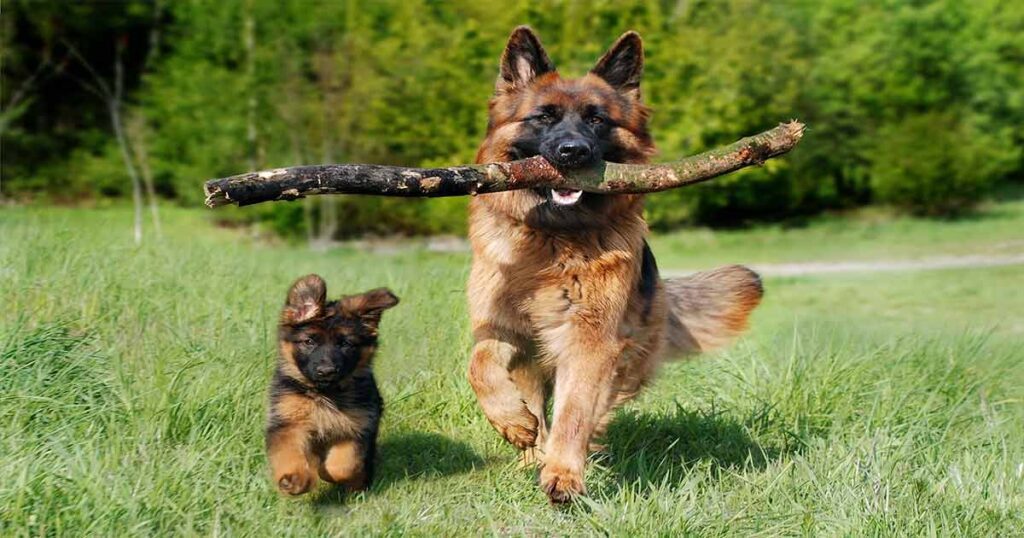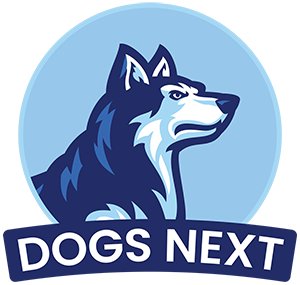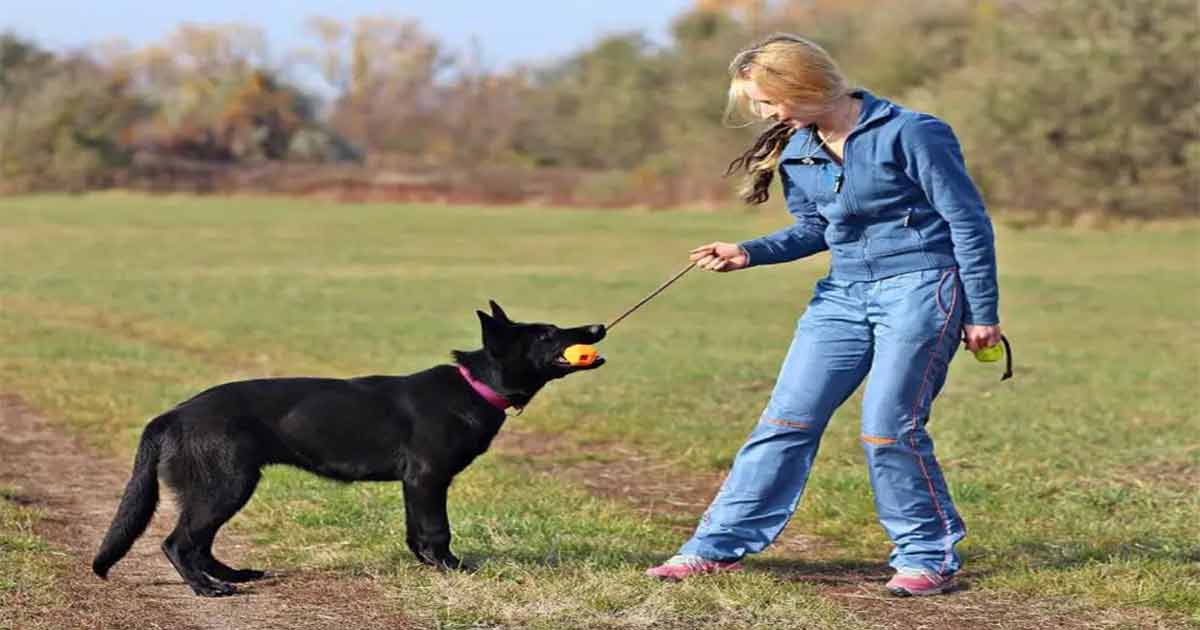As a responsible owner, it’s essential to understand the appropriate duration and intensity of walks for your German Shepherd puppy. Regular exercise plays a crucial role in their physical and mental well-being.
Walking requirements for German Shepherd puppies can vary depending on their age and individual needs. Puppies should be walked for short durations at first, around 5 to 10 minutes per month of their age, up to a maximum of 30 minutes for younger puppies.
It’s important to strike a balance between providing exercise and avoiding excessive strain on their developing joints. As they grow, gradually increase the duration to 30 to 45 minutes per walk to ensure proper exercise without overexertion.
In this article, we will provide you with valuable guidelines on how long you should walk your and walk my German Shepherd puppy. So, let’s dive in!
Table of Contents
German Shepherd Puppy’s Exercise Needs
German Shepherds are a working breed, originally bred for herding and guarding tasks. Their innate athleticism and intelligence make them excellent candidates for various activities.
Regular exercise is essential for German Shepherd puppies as it helps them release their pent-up energy, maintain a healthy weight, and promote proper muscle development.
Moreover, exercise contributes to their mental stimulation, reducing the likelihood of behavioral issues caused by boredom or excess energy.
Here’s a breakdown of exercise recommendations for different stages:
| Developmental Stage | Recommended Exercise Duration |
| 8-12 Weeks | Short, frequent walks (10-15 minutes, 2-3 times a day) |
| 3-6 Months | Longer walks (20-30 minutes, 2-3 times a day) |
| 6-12 Months | Moderate exercise (30-45 minutes, 2 times a day) |
It’s important to note that each puppy is unique, so adjust the duration based on their individual needs and energy levels. Always prioritize gradual and controlled exercise to avoid overexertion and joint stress.
How to Properly Walk My German Shepherd Puppy
When it comes to walking a German Shepherd puppy, it’s crucial to consider their age and gradually introduce them to the concept of walking on a leash. Here are some age-specific guidelines to follow:

8-12 Weeks
At this stage, your puppy is still developing physically. Focus on short walks to prevent exhaustion. Use a lightweight leash and ensure a comfortable, properly fitted collar or harness. Allow your puppy to explore their surroundings while keeping a close eye on them.
3-6 Months
As your puppy grows, you can gradually increase the duration of walks. Practice leash training during this stage to teach them proper behavior on a leash. It’s a good time to introduce them to different environments and socialize them with other dogs and people in controlled settings.
6-12 Months
By this stage, your and walk my German Shepherd puppy can handle more exercise. Longer walks can help burn off excess energy and keep them mentally stimulated.
Avoid high-impact activities like intense jogging or running until their bones and joints fully develop.
Remember to always prioritize your puppy’s comfort, safety, and well-being during walks. Avoid walking in extreme weather conditions, provide access to fresh water, and clean up after them to maintain a clean environment. Additionally, make sure to consult your veterinarian for personalized advice on your specific puppy’s exercise needs.
Building Up Stamina and Endurance for Your Puppy
As your and walk my German Shepherd puppy grows, it’s great to gradually build up their stamina and endurance through exercise. Start with shorter walks and increase the duration and intensity over time. This approach allows their muscles and joints to develop and prevents overexertion.
Begin with gentle walks of around 10-15 minutes, 2-3 times a day. Focus on letting your puppy explore their surroundings while keeping a close eye on their energy levels. As they become more comfortable and stronger, you can gradually extend the duration of their walks.
It’s necessary to note that while exercise is beneficial, pushing your puppy too hard can lead to fatigue and potential injuries. Always monitor their behavior during walks and watch for signs of fatigue or overexertion.
Pay attention to cues such as excessive panting, lagging, reluctance to move, or seeking shade. If you notice these signs, it’s time to rest and allow your puppy to recover.
Signs of Fatigue and Overexertion
Puppies are naturally energetic and may tend to push themselves beyond their limits. However, it’s essential to understand the potential risks associated with overexertion.
If your puppy displays signs of fatigue such as excessive panting, heavy drooling, difficulty walking or standing, or seeking frequent breaks, it’s an indication that they need rest. Ignoring these signs and pushing them further can lead to exhaustion, muscle strain, or even heatstroke.
To prevent overexertion, provide your puppy with ample breaks and access to fresh water during walks. Adjust the duration and intensity of exercise based on their age, physical condition, and weather conditions. Remember, their well-being should always be the top priority.
Factors Influencing Exercise Needs
Exercise requirements can vary for each walk my German Shepherd puppy based on individual factors. Factors such as health, size, and temperament can influence their exercise needs. It’s important to consider these factors and adapt your exercise routines accordingly.
Puppies with certain health conditions or physical limitations may require modified exercise programs. Always consult with your veterinarian to ensure that the exercise routine you follow is suitable for your puppy’s specific health needs.
Additionally, each puppy has its temperament. Some may have a higher energy level and require more exercise, while others may be more laid-back. Observe your puppy’s behavior and adjust their exercise routine accordingly to meet their individual needs.
Other Forms of Exercise for German Shepherd Puppies
While regular walks are essential for your and walk my German Shepherd puppy, it’s also beneficial to incorporate alternative activities that provide additional mental stimulation and physical exercise. Here are some suggestions to complement their regular walks:
- Playtime: Engage your puppy in interactive play sessions. Play fetch with a ball or Frisbee, or provide them with chew toys and puzzle toys that keep their minds active.
- Mental Stimulation: German Shepherds are intelligent dogs, and mental exercise is just as important as physical exercise. Teach them new tricks, use treat-dispensing toys, or try obedience training sessions to challenge their minds.
- Socialization: Introduce your puppy to different environments, people, and other well-behaved dogs. This helps them develop social skills and build confidence. Puppy socialization classes or playdates with other friendly dogs can be great opportunities for socialization.
Adjusting Exercise as Your German Shepherd Puppy Grows
As your and walk my German Shepherd puppy transitions into adolescence and adulthood, it needs to modify their exercise routines accordingly. Here’s a guide to adjusting exercise routines:

- Adolescence (6-18 months): During this stage, your puppy will experience growth spurts and increased energy. Gradually increase the duration and intensity of their exercise to accommodate their growing bodies. Longer walks, jogging, and more challenging mental stimulation activities can help meet their exercise requirements.
- Adulthood (1 year and older): Adult German Shepherds still require regular exercise to maintain their physical and mental health. Aim for daily walks of at least 30-45 minutes, along with other activities like running, hiking, or participating in dog sports such as agility or obedience training. Find activities that match your dog’s energy level and interests.
Remember, the key is to strike a balance between exercise and rest to avoid overexertion. Pay attention to your dog’s cues and adjust the duration and intensity of activities accordingly.
Common Mistakes to Avoid
When exercising your and walk my German Shepherd puppy, it’s crucial to be aware of common mistakes that owners often make. Here are some tips to keep in mind:
- Overexercising: Don’t push your puppy beyond their limits. Overexertion can lead to exhaustion, injuries, and long-term joint problems.
- Ignoring Signs of Fatigue: Watch for signs of fatigue or overexertion during walks or other activities. If your puppy shows signs of exhaustion, such as heavy panting, excessive drooling, or difficulty walking, give them a break and allow them to rest.
- Lack of Mental Stimulation: Exercise should not only focus on physical activity but also mental stimulation. Engage your puppy’s mind through training, puzzle toys, or interactive play sessions to prevent boredom and promote overall well-being.
Skipping Socialization: Exposing them to various environments, people, and dogs helps them develop into well-rounded adults. Make sure to provide ample opportunities for socialization during their exercise routines.
Frequently Asked Questions
Q: How long should I take walk my German Shepherd puppy for a walk?
Ans: The duration of walks for German Shepherd puppies varies based on their age. Start with short walks of around 5-10 minutes and gradually increase as they grow.
Q: How many times a day do you walk a German Shepherd puppy?
Ans: German Shepherd puppies should be walked 2-3 times a day. However, the duration and intensity of the walks should be adjusted based on their age and energy levels.
Q: How long can a 1-year-old German Shepherd walk?
Ans: A 1-year-old German Shepherd can handle longer walks ranging from 30 to 60 minutes, depending on their fitness level. Monitor their behavior and adjust as needed.
Q: How much exercise does a 1-year-old German Shepherd need?
Ans: A 1-year-old German Shepherd requires approximately 1 to 2 hours of exercise each day. This can include walks, playtime, mental stimulation, and other activities to keep them physically and mentally engaged.
Q: Daily routine for a German Shepherd puppy?
Ans: A typical daily routine for walk my German Shepherd puppy includes regular walks, playtime, training sessions, mental stimulation activities, socialization with other dogs and people, and ample rest periods. It’s important to strike a balance between exercise, mental stimulation, and relaxation for their overall well-being.
Conclusion
n conclusion, understanding how long to walk your and walk my German Shepherd puppy is crucial for their overall well-being. Regular exercise is essential for these high-energy pups, as it helps them release energy, maintain a healthy weight, and promote mental stimulation.
Remember to be mindful of signs of fatigue and overexertion, and adjust the exercise routine based on individual factors such as health, size, and temperament.
Incorporating alternative activities and avoiding common mistakes will further contribute to a happy and healthy and walk my German Shepherd puppy. So, lace up those walking shoes and embark on a wonderful journey with your furry friend! Good luck!

I’m David, an expert contributor and writer, with two furry friends of my own, I know the challenges of raising and caring for dogs. From training to nutrition and health, my goal is to provide valuable insights and advice to help create strong bonds and happy, healthy lives. Find me in Twitter.




